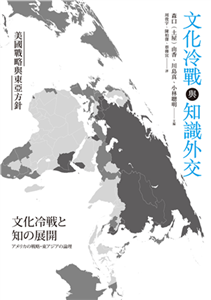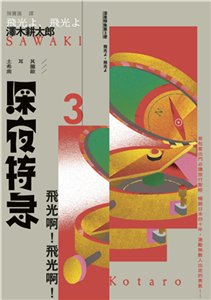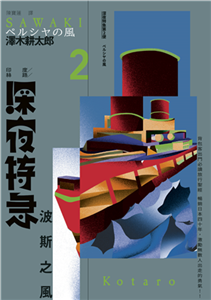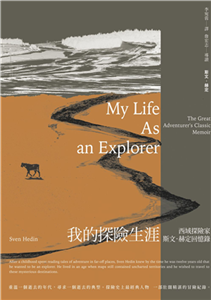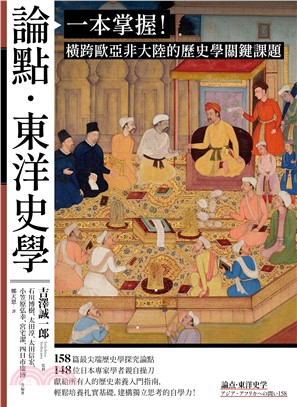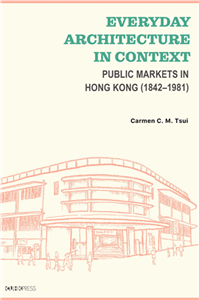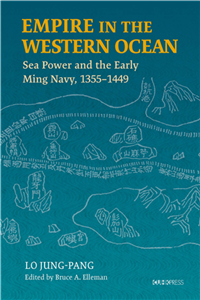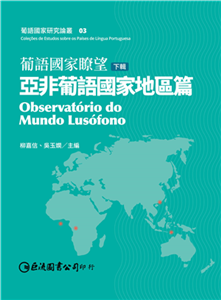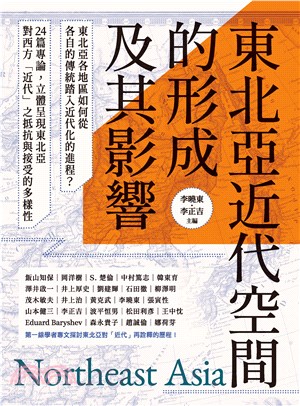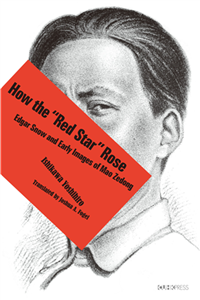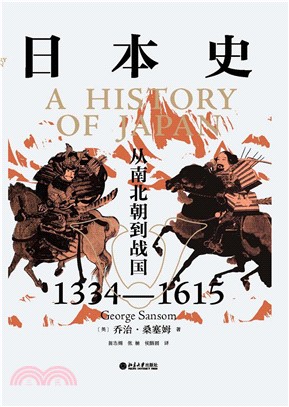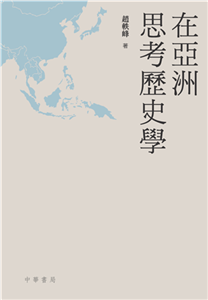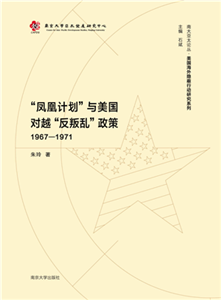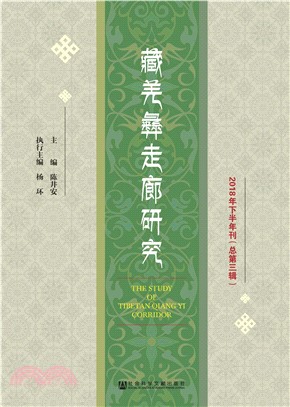【內容簡介】 「陰陽者,天地之道也,萬物之綱紀,變化之父母……治病必求於本。」 《黃帝內經》闡明,陰陽乃天地循環之道,花草樹木、鳥獸蟲魚,乃至萬物之靈的人類,都要按照此規律生存。人們如果破壞了體內的陰陽和諧,便會產生疾病。因此,調和陰陽方為防治所有疾病的根本之道。 然而,陰陽在男女老少、四肢百骸、五臟六腑、七情六慾中,表現方式皆有所不同,該如何才能維持陰陽平衡呢? 其實很簡單,只要跟隨本書的保健方法,從日常的情緒管理、生活作息、藥膳飲食,以及簡單的穴道按摩著手,就能達到滋陰補陽,百病不生的目的!
優惠價:7
294
何謂真實?誰說了算?我們該怎麼活? 這是千百年來圍繞著西方世界「東方迷戀」的三個大哉問。 從亞歷山大大帝到披頭四, 從資源的掠奪到真理與靈魂的求索, 有哪些事物讓西方人沉醉於亞洲的光芒中? 自古希臘時代開始,西方與亞洲的交會大多充斥著奇異生物與巨人的荒誕傳說、極遠地區運來絲綢與香料的傳奇,以及對於遙遠未知的帝國感到的憂慮或不安。儘管二十世紀亞洲大半地區在經歷數百年戰事之後落入西方勢力的統治,但亞洲的思想、藝術與精神影響,卻在此時開始對西方進行回擊。 《東方迷戀史》志在探索這部豐富交織的故事,勾勒這段混淆、迷茫卻非常重要的亞洲與西方關係史。自馬可.波羅以降,亞洲是西方人衷心迷戀的對象,但是西方對亞洲的認識卻又同時充滿缺陷。中國、印度和日本既被視為偉大的文明,卻又基於某些褊狹粗淺的觀點,認定是被西方超越並拋在腦後的地區。 東方曾是西方人眼中充滿財富與驚奇的迷人之地、前景可期的基督教傳教對象,甚至成為西方人汲取新智慧的泉源。克里斯多福.哈定以細膩的鋪陳,為讀者展開一片由天才、冒險家、騙子、掠奪者和信仰傳播者共築的天地,生動的景象令人目不轉睛,精闢呈現亞洲對西方造成的豐碩影響。 各界推薦 方天賜(臺灣印度研究協會理事長) 巫師地理(地理與國際情勢粉專) 林佩瑩(國立政治大學宗教學研究所副教授) 陳樂知(國立臺灣大學傳統與科學形上學研究中心執行長) 黃冠閔(中央研究院中國文哲研究所研究員兼所長) 鄭凱元(國立陽明交通大學心智哲學所教授) ——誠摯推薦(依姓名筆畫排序)
優惠價:7
476
现代动物保护运动诞生于19世纪的英国。动物被普遍用于劳动、医学实验、表演,它满足了人们的商业和娱乐需要。然而在保护者看来,动物是遭受不公对待的弱者。反对者与支持者,激进者与保守者,展开了一场持续百年的斗争。 本书讲述了动物保护者积极地“挪用”各种传统——关心公平正义和社会解放的政治传统、认知生物多样性的自然历史传统、认为生物有亲缘关系的演化论传统、以动物之友角色抒情的文学传统……进而呼吁公众支持的精彩历史。这场运动促进了动物保护的观念普及和立法,还折射出近代英国社会、文化、思潮等多方面的演变。
優惠價:8
440
冷戰時期,權力與知識的一體兩面,如何影響外交? 國際賽局╳知識霸權╳文化政治 第一本從「知識外交」角度書寫的「冷戰史」 集結台日中美韓學者‧探討文化冷戰的關鍵時刻 東亞著名外交史學者森口(土屋)由香、川島真、小林聰明主編 知識霸權與國際政治情勢密切相關…… 技術援助、媒體事業、新聞教育、研究資金、原子能研究 ──比武力更有影響力的「文化政治」! 因應冷戰時期特殊的國際情勢,大國「美國」在維持國際情勢平衡,又想以各種非軍事方法對抗共產勢力,因此在東亞各國採取各種因應方法。其中,以「知識」做為外交手段,是當時與各國交往的「特色」之一。本書以美國在冷戰時期在東亞各國的所做的「文化個案」為例,探討這個特殊的外交手段與形式。 || 從三個方向了解知識外交 || 從「了解外國」的區域研究出發,闡明亞洲與美國如何參與知識生產,以及其與軍事和安全保障領域不同。 科學知識的影響,尤其是冷戰初期美國和東亞各國間頻繁地進行知識交流和技術轉移的三個領域,原子能科學、生物學、農業技術。 探討以知識和訊息傳播手段的新聞專門知識為對象,聚焦在其中的政治性和行為主體性兩層面。 冷戰史研究在二十一世紀後日益多樣化,更加強調冷戰的多元性。冷戰不只是東西對立,亦與去殖民化和民族主義興起複雜相關,冷戰的起源也可回溯至工業革命。冷戰期間美國所推動的「現代化」和「開發」,起源自一九三○年代的「羅斯福新政」 或更早之前。因此,冷戰研究的對象除了空間與時間擴大,對於東西對立的本質也有更多元的理解。 具體而言,冷戰不僅是意識型態對立和核子軍備擴張競賽,也是生活方式和文化的競爭,同時也是為了爭取包含第三世界等國家的認同。法蘭西斯・桑德斯(Francis Saunders)的「文化冷戰」,以及肯尼斯.奥斯古德(Kenneth Osgood)的「總體冷戰」等形容,正展現出冷戰的新詮釋。同時,研究者們對於文化冷戰中文化和資訊「供給者」、「接受者」這種單純的二元對立也開始表示疑問。潘妮‧馮‧愛紳(Penny M. Von Eschen)聚焦於美國的爵士樂,描繪其與美國國務院政策制定者欲將音樂利用於文化外交的意圖相反,跨越國界與文化,自在地傳播流動性和可塑性。日本、中國、韓國、臺灣的研究者們也開始關注音樂、電影、廣播、電視、文學等文化面向討論冷戰。 然而,在這樣的文化冷戰研究系
優惠價:1
483
──特別版獻給特別的旅人── @特邀作者為珍藏版撰寫"新版專序” 背包客出門必讀旅行聖經 暢銷日本四十年《深夜特急》,激勵無數人出走的勇氣!! 旅行,是為了一個最單純的夢想! 走過許多國家,看過許多人事物, 才發現出走需要勇氣。 「旅行是一種個體。自有其性格、風格、個性和獨特性。旅行是人,絕無雷同。」 ──美國作家 約翰.史坦貝克 1900美金,玩一年!!! 請跟著澤木耕太郎一起搭上《深夜特急》第一班車, 從香港、澳門,一路玩到新加坡…… 澤木耕太郎,大學畢業後,上班第一天,在人潮擁擠的上班途中,突然決定不要當個朝九晚五的上班族。二十六歲,他湊出身上最後的一千九百美金,決意從印度德里一路搭乘巴士到達倫敦。在歐亞大陸的巴士之旅展開以前,第一段旅程「黃金宮殿」,就是他從香港到新加坡的故事。 澤木耕太郎說:從我二十六歲到二十七歲這段時間,我一直在歐亞大陸旅行。這趟由印度德里至英國倫敦的旅程,我試著以乘坐巴士的特殊方法來啟程。因而當我往東南亞、印度和絲路等地一路前進時,彷彿體內出現了像測量距離一樣的東西,不論是用行走或坐巴士的方式,透過自己的雙腳,來掌握地球這塊土地的遼闊廣大。對我而言,這樣的體驗也算是收穫之一吧! 《深夜特急》系列記述作家澤木耕太郎隻身一人展開的孤獨浪遊,他以最澄澈的雙眼、最明晰的思緒、最柔軟的心與這個世界碰撞,完成一段既震撼、又充滿驚奇的身心靈壯旅。當年在日本出版後旋即成為暢銷書,並且掀起一陣自助旅行熱潮! 《深夜特急》風靡日本四十年,是背包客心目中永遠的自助旅行聖經,激勵了無數年輕人對於旅行的渴望和憧憬,並且有了出走的勇氣。 【《深夜特急》輝煌紀錄】 ◆1986年---《深夜特急》第一班、第二班於日本出版,獲得第五回日本冒險小說協會大賞 ◆1992年---《深夜特急》第三班於日本出版,並獲得第二屆JTB紀行文學大賞。全系列在日本引發背包客自助旅行的熱潮,堪稱日本旅行文學的重量級經典作之一 ◆1996年---《深夜特急》全系列改編為日劇,由大澤隆夫、松嶋菜菜子主演,井上陽水演唱主題曲,以一年播出一部的特別劇形式播映。該劇並獲得日本民間放送聯盟獎的「最優秀作品獎」 ◆1997年---《深夜特急》日劇第二部播映,並獲得該年度「銀河獎」的「優秀作品獎」 ◆1998年---《深夜特急》日劇第三部播映 ◆2007年---《深夜特急》繁
優惠價:1
280
──特別版獻給特別的旅人── @特邀作者為珍藏版撰寫"新版專序” 背包客出門必讀旅行聖經 暢銷日本四十年《深夜特急》,鼓舞無數人出走的勇氣!! 旅行,是為了一個最單純的夢想! 走過許多國家,看過許多人事物, 才發現出走需要勇氣。 「旅行是一種個體。自有其性格、風格、個性和獨特性。旅行是人,絕無雷同。」 ──美國作家 約翰.史坦貝克 1900美金,玩一年!!! 《深夜特急》第三班車,土耳其、希臘、南歐, 走吧!盡情放浪人生輕狂…… 澤木耕太郎,大學畢業後,上班第一天,在人潮擁擠的上班途中,突然決定不要當個朝九晚五的上班族。二十六歲,他湊出身上僅有的一千九百美金,決意從印度德里一路搭乘巴士到達倫敦。 深夜特急第三班車〈飛光啊!飛光啊!〉,從土耳其、希臘一路玩到南歐,作者的浪遊來到了終點站。 澤木耕太郎── 從同樣是旅行,但如果像團體旅行一樣,一開始就已經確定出發日和回國日的話,應該會很無趣吧!不過,要向我一樣來一趟隨時出走、自由返國的長程旅程,也是有意想不到的困難之處。因為不知道該在何時,或在何處讓旅程告一段落會比較好。如果最後變成為了追求旅行的結果而去旅行,就很難有一些奇妙的體驗了。在那段旅程中,我明白自己找到了那個好時機。___________________________ 《深夜特急》系列記述作家澤木耕太郎隻身一人展開的孤獨浪遊,他以最澄澈的雙眼、最明晰的思緒、最柔軟的心與這個世界碰撞,完成一段既震撼、又充滿驚奇的身心靈壯旅。當年在日本出版後旋即成為暢銷書,並且掀起一陣空前的自助旅行熱潮! 《深夜特急》風靡日本四十年,是背包客心目中永遠的自助旅行聖經,鼓舞了無數年輕人對於旅行的渴望和憧憬,並且有了出走的勇氣。 【《深夜特急》輝煌紀錄】 ◆1986年---《深夜特急》第一班、第二班於日本出版,獲得第五回日本冒險小說協會大賞 ◆1992年---《深夜特急》第三班於日本出版,並獲得第二屆JTB紀行文學大賞。全系列在日本引發背包客自助旅行的熱潮,堪稱日本旅行文學的重量級經典作之一 ◆1996年---《深夜特急》全系列改編為日劇,由大澤隆夫、松嶋菜菜子主演,井上陽水演唱主題曲,以一年播出一部的特別劇形式播映。該劇並獲得日本民間放送聯盟獎的「最優秀作品獎」 ◆1997年---《深夜特急》日劇第二部播映,並獲得該年度「銀河獎」的「優秀作品獎」
優惠價:1
294
──特別版獻給特別的旅人── @特邀作者為珍藏版撰寫"新版專序” 背包客出門必讀旅行聖經 暢銷日本四十年《深夜特急》,激勵無數人出走的勇氣!! 旅行,是為了一個最單純的夢想! 走過許多國家,看過許多人事物, 才發現出走需要勇氣。 「旅行是一種個體。自有其性格、風格、個性和獨特性。旅行是人,絕無雷同。」 ──美國作家 約翰.史坦貝克 1900美金,玩一年!!! 《深夜特急》第二班車,往印度、絲路的班車準備啟程…… 澤木耕太郎,大學畢業後,上班第一天,在人潮擁擠的上班途中,突然決定不要當個朝九晚五的上班族。二十六歲,他湊出身上僅有的一千九百美金,決意從印度德里一路搭乘巴士到達倫敦。這第二段旅程〈波斯之風〉,便是作者前進到印度與絲路,以「巴士」展開的旅程。 澤木耕太郎──旅行最不可思議的就是,有充足的經費當然好,但只能看到有錢旅行的面貌。事實上,越是沒有錢,另一面反而會看得更多。我想,如果可以的話,不妨趁著年輕,多多體驗貧窮旅行會比較好。至少,當我在進行「深夜特急」之旅的期間,身上沒帶什麼錢,因此在行經的土地上和當地人民交流時,更能感受到人們的熱情,這就是我走下去的動力。就那樣來看,收穫確實相當多。 《深夜特急》系列記述作家澤木耕太郎隻身一人展開的孤獨浪遊,他以最澄澈的雙眼、最明晰的思緒、最柔軟的心與這個世界碰撞,完成一段既震撼、又充滿驚奇的身心靈壯旅。當年在日本出版後旋即成為暢銷書,並且掀起一陣空前的自助旅行熱潮! 《深夜特急》風靡日本四十年,是背包客心目中永遠的自助旅行聖經,鼓舞了無數年輕人對於旅行的渴望和憧憬,並且有了出走的勇氣。 【《深夜特急》輝煌紀錄】 ◆1986年---《深夜特急》第一班、第二班於日本出版,獲得第五回日本冒險小說協會大賞 ◆1992年---《深夜特急》第三班於日本出版,並獲得第二屆JTB紀行文學大賞。全系列在日本引發背包客自助旅行的熱潮,堪稱日本旅行文學的重量級經典作之一 ◆1996年---《深夜特急》全系列改編為日劇,由大澤隆夫、松嶋菜菜子主演,井上陽水演唱主題曲,以一年播出一部的特別劇形式播映。該劇並獲得日本民間放送聯盟獎的「最優秀作品獎」 ◆1997年---《深夜特急》日劇第二部播映,並獲得該年度「銀河獎」的「優秀作品獎」 ◆1998年---《深夜特急》日劇第三部播映 ◆2007年---《深夜特急》繁體中文版首度在台
優惠價:1
280
────特別版獻給特別的旅人──── @特邀作者為珍藏版撰寫"新版專序” 不要害怕,但請一路小心。────獻給所有準備出發旅行的人…… ǁ長銷日本四十年,譽為背包客旅行聖經《深夜特急》最終章ǁ 旅行,是為了一個最單純的夢想! 走過許多國家,看過許多人事物, 才發現出走需要勇氣。 「旅行是一種個體。自有其性格、風格、個性和獨特性。旅行是人,絕無雷同。」 ──美國作家 約翰.史坦貝克 旅行的力量,讓我們看見世界的高度, 也看見我們自己的高度! 26歲,旅費1900美元,從印度德里到英國倫敦,沒有旅行計畫也沒有時間表,總距離超過兩萬公里的世界大壯遊……《深夜特急》系列記述作家澤木耕太郎隻身一人展開的孤獨浪遊,他以最澄澈的雙眼、最明晰的思緒、最柔軟的心與這個世界碰撞,完成一段既震撼、又充滿驚奇的身心靈壯旅。當年在日本出版後旋即成為暢銷書,並且括起一陣空前的自助旅行熱潮!《深夜特急》風靡日本近四十年,是背包客心目中永遠的自助旅行聖經,激勵了無數年輕人對於旅行的渴望和憧憬,並且有了出走的勇氣。 沉寂多年後,深夜特急列車即將再度啟動! 做為系列完結的末班車《旅行的力量》,將搭載所有旅人一同駛抵終點。旅行是什麼?為什麼人會想要去旅行?旅行需要怎樣的力量?這些力量從何而來?這本散文集堪稱澤木耕太郎旅行哲學的集大成之作,誠實面對關於旅行的各種發問,除了引領你一窺那段浪遊背後不為人知的祕辛及小插曲,探訪旅行的原點,揭開你所未知的《深夜特急》,更帶領你重新觀照旅行的本質與意義,重返旅人的初心,重燃對於旅行的悸動、對於世界的感動。 喜歡《深夜特急》的你千萬不能錯過;不認識《深夜特急》的你,一定能從這本書開始發現更多關於旅行和人生的想像可能…… 【媒體、書店店員、讀者好評推薦】 ▎這是本會讓年輕旅行者歡呼的書。──朝日新聞社 ▎關於這個「最終回」,或許可以取個像電影般的片名「Making of…」。在書內,我們找到了曾經喜愛《深夜特急》的餘韻,耽溺不已。──作家 近藤雄生 ▎這本書讓我深深感受到,旅行的體驗和記憶並不會隨著歲月流逝而消失,反而會經年累月,讓這些變得更加璀璨光輝,甚至結出豐碩的果實。──《旅與鐵道》總編輯蘆原 伸 ▎旅行記事這種書雖然不見得得從頭到尾照順序讀才能讀懂,但這本書真的不管從任何地方開始讀都相當有趣……作者本人博學多聞,書中內容又豐富,光是
優惠價:1
266
费耐生是中亚研究的世界级权威,少有的掌握法、德、俄、波斯、阿拉伯、突厥等诸多古典和东西方语言的大家,有《剑桥伊朗史》等多部重磅著作,培养了诸多活跃于世界各地的亚洲研究者。 “陌生而重要”的中亚始终吸引着全世界的目光,而变动的格局、多元的语言和人群,使得书写这片地域的历史相当困难。费耐生以其冠绝一时的学识,将古代中亚史浓缩在一本200多页的小书中,包括波斯、亚历山大等帝国的兴衰,斯基泰人、匈人等游牧民族的迁徙,费尔干纳、撒马尔罕、巴米扬等古城的文明,贵霜、大夏等被遗忘的西域古国……他志在表明,中亚其实拥有共同的文化、信仰与价值,这就是古代历史留下的遗产。
優惠價:8
356
故事靈感取自「南科考古遺址」 一套「輕鬆、簡單、好看又兼備知識性」的少年漫畫 一份獻給讀者的心意:《集合!RENDEVOUS》臺語動態漫畫同步製作 「什麼?南科竟然有一隻大怪獸!」 汪玉茹與原原在古代執行任務,藍廷元卻在博物館內誤觸了古文物,兩人的任務相撞,因此誤將古代人和瘋狂的魔獸傳送到現代的博物館。 為了消滅魔獸並把古代人送回正確的年代,汪玉茹對魔獸展開了追逐,藍廷元則在博物館內找尋線索。 兩人還會面臨哪些挑戰?在山海原精靈的協助下能順利完成任務嗎?快來集合一探究竟吧! 【本集角色介紹】 ▶ 藍廷元:個性樂天,對歷史充滿好奇心,不折不扣的文史控。在同儕間看似專長明確,父母卻為其過於專一的興趣而擔憂。 ▶ 古代人:揹著弓箭,擅長射擊,有一隻忠心的跟班小狗。一身奇裝異服,為追捕魔獸來到現代,對現代規範一無所知,頭戴陶偶面具的他,一不小心成為博物館的「通緝犯」。 ▶ 魔獸:由不同時代的古物混種而成的怪物,以吸收方塊的負能量壯大自己,造成歷史混亂。 ▶ 古代人的狗:古代人的忠心夥伴,跟隨主人打擊魔獸,十分靈活,擅長跳躍與咬擊,危急時刻會躍出拯救主人。 本書特色 ◆ 後記「出發點」單元,以簡要文字說明故事取材 集合漫畫皆取材自臺灣島嶼的故事,在書籍最末的「出發點」單元中,以精鍊的八百字陳述一段如今揉合進漫畫中,或已被遺忘、或在臺灣島嶼佔有一席之地的臺灣歷史。 ◆ 打破傳統線性連載思維,不怕缺漏遺失! 本系列漫畫五位主角透過「朗德芙方塊」穿梭進入各個年代,執行形形色色的任務,歷經大大小小的冒險。故事以單元劇方式呈現,讀者不論從哪一集開始閱讀,都能隨時進入狀況。 ◆ 臺語動態漫畫同步製作,打造豐富有趣的視聽體驗 書籍內附「集合說臺語」QR Code,讀者在閱讀臺灣島嶼故事之際,也能藉由臺語說故事的聲音及動態畫面,了解臺灣島嶼的身世。 各界好評推薦 ◆ 日本NHK,Asia Insight節目《A Language Identity: Taiwan》訪問,共同關注台語文化 ◆ 作家黃崇凱、洪明道、何玟珒臉書專文推薦 ◆ 作家張亦絢OPENBOOK專文推薦 ◆ 鏡週刊專欄報導,揭臺灣島嶼身世 ◆ 鏡電
優惠價:79
174
◎高中東亞歷史素養檢定秘寶書籍 因應新課綱與大考命題方向,本書內容結合考點趨勢,並融合實際生活經驗,培養運用於生活的能力。以整理好的時序脈絡引導學生一步步理解歷史的輪廓,從文本覺察到懂得融會貫通於生活,更洞察歷史素養。 東亞歷史素養其實並不難!3大看點快速掌握要領 1.題目結合跨科整合趨勢 2.逐步引導學生循序漸進地思考 3.充分掌握自我學習的狀況 如果您也是以下族群: ?對新課綱不知所措的高中學生 ?正在尋找適用教材的高中教師 那這一本【素養檢定 高中歷史素養題本 東亞歷史】正符合您的需求 「素養」正是生活與升學的關鍵,建構與解構正確的歷史時序脈絡,逐步訓練自己對歷史素養的生活運用能力,為高中階段的歷史做好萬全準備。 本書特色: 1.貼合108課綱結合考點趨勢 本書的素養題組貼合108課綱並將時序進行整併,文本內容新穎、與時俱進,帶領同學跟上新課綱趨勢。 2.融合多元議題增進生活經驗 提到疫情、宗教、旅遊、動畫、法律等議題,將歷史與議題連結,培養運用歷史思辨於生活當中的敏銳力。 3.詳細易懂的詳解與難易度指標 每題均由專業師資撰寫解題,讓同學了解題目學習表現與難易度,並附有本文主旨及考點,供學生檢視知識掌握度是否準確,最後更有延伸議題腦力激盪。 4.四步驟提供教師與同學使用 本書提供教師與學生如何使用本書的參考,拓展教學方向與更多角度的思考脈絡。
優惠價:7
294
重溫一個逝去的年代,尋求一個逝去的典型。 探險史上最經典人物 一部壯闊精湛的冒險紀錄 ——斯文.赫定—— Ø探勘中亞腹地的先驅 Ø深入戈壁、首位發現樓蘭古城遺址 Ø尋找羅布泊、發現喜馬拉雅山脈 Ø「絲路」之名的創造者 一八八O年四月二十四日,對瑞典著名探險家斯文‧赫定而言,是個意義非凡的日子。這天,由諾登舍爾領導的極地探險船「維加號」凱旋駛抵斯德哥爾摩港,全城瀰漫著歡騰鼓舞的氣氛,而這股熱烈的狂喜與興奮,宛如茫茫浩海中的明燈,霎時擦亮了斯文‧赫定混沌的人生道路。此時此刻,年僅十五歲的少年斯文‧赫定,在心中立定志向:「有朝一日,我也要像這樣衣錦榮歸。」 從此,斯文‧赫定以北極探險為標的。唯命運之神微妙難測,正如斯文‧赫定所言:「命運之神引導我走向亞洲大道。隨著歲月的流逝,我年少時到北極探險的夢想已逐漸淡去,從那一刻起,亞洲這片地球上幅員最遼闊的陸地所散發出最令人著迷的力量,顯然主宰了我往後的生命。」誠然,由於因緣際會將斯文‧赫定帶到了亞洲,也因而為他開啟了深入亞洲腹地的大門。 一八八五年夏天,因受聘擔任諾貝爾家族的家庭教師,他開始首次的亞洲之旅,先由俄屬中亞進入波斯(今伊朗),然後逐步朝亞洲心臟地帶推進。一八九O年十二月,他跟隨一支馱隊從俄國東部的小城抵達中國西陲重鎮喀什,這次行程更將他與中國的新疆、西藏及塔里木等地緊密結合在一起。 三年後,斯文‧赫定再度造訪中亞進行探險考察,重點是塔里木地區,全程達一O四九八公里;之後,他又多次深入中國西域與窮山惡水搏鬥、試圖攀登「冰山之父」慕士塔格峰、挑戰「死亡之地」塔克拉馬干沙漠。其中最受世人矚目的是:發現樓蘭古城,以及重新界定羅布泊的位置…… 一次次的驚險歷程、無數的感人故事與奇麗景致,盡如實景般,栩栩如生地展現在《我的探險生涯》一書中。 【媒體推薦】 「一連串令人稱奇的冒險紀錄……瀕臨生死邊緣,緊扣人心,能滿足絕大部分讀者。」——《紐約論壇報》 「絕無一句廢話……每個句子都鮮活靈動,一如中世紀北歐英雄傳奇故事。」——《紐約時報》 「這是一部引人入勝的時代作品,也是一本扣人心弦的讀物。」 —— 《衛報》
優惠價:1
574
本书精选王新生教授多年来在日本研究领域发表的学术论文,涉及日本政治研究的理论与方法、“国民国家论”的评介、历史研究与国际政治学的研究方法、日本地主制与早期资本主义的发展、英国和日本资产阶级革命初期的地主政治、日本明治时期的近代化进程、日本近代国民意识的形成、“日本模式”的终结、有泽广巳经济思想及其对战后日本经济体制的影响、二战后日本的施政决策、江田三郎的结构改造论、日本政治的未来发展趋势等,对开展日本研究有较高参考价值。
優惠價:7
448
How do public markets, as ordinary as they seem, carry the weight of a city’s history? How do such everyday buildings reflect a city’s changing political, social, and economic needs, through their yearslong transformations in forms, functions, and management? Integrating architecture and history, this book invites readers to go through the growth and governance of colonial Hong Kong by tracing the past and present of public markets as a study of extensive firsthand historical materials. As the readers witness the changes in Hong Kong markets from hawker pitches to classical market halls to clean modernist municipal complexes, the book offers a new perspective of understanding the familiar everyday markets with historical contexts possibly unfamiliar to most, studying markets as a microcosm of the city and a capsule of its history. This book is a robust and in-depth study of the market building history of Hong Kong since the 1840s and contributes to a holistic understanding of everyday
優惠價:7
1064
本书是日本著名学者、文化专家井上章一考察京都历史/日本人文的集大成之作。作者视角新锐,由京都这座千年古都放眼全国,剖析京都的历史地位对日本全境带来的不可逆转的影响。作者深入浅出,由明治维新迁都东京至近日日本文化厅欲迁至京都,将京都与东京的关系娓娓道来。作者结合自身经历与历史文脉,逐一解开国外游客(特别是中国游客)对于日本各地地名之困惑。“东海道”“中国”“近畿”“关东”,这些日本地名与古都京都有着不可分割的地政关系。 不仅历史动态脉络清晰,细节之处也是精彩频出。从京都中心区的千年老店,到祇园祭上的舶来品织毯,都藏着许多鲜为人知的来历与故事。书中叙述平易近人,仿佛熟人与你话家常,作者用自己高超的语言功底尽可能超越文化的差异,将富有日本特色的概念,以平实生动的文体表述出来。表面似乎是京都郊区居民吐槽京都中心地区,实则谈日本的地理、历史、政治,作者致力于以一座城出发,向读者解释日本文化的演进过程。
優惠價:7
193
In this ground-breaking, posthumous study, the late Lo Jung-pang discusses the geographic, political, and commercial factors that led to the emergence of seapower and a navy under the Ming. While Zheng He and his seven expeditions have received some scholarly attention, few understand the long history of maritime engagement which provided the nautical and technical background for these voyages. The evolution of this maritime engagement and its extension into the Indian Ocean is the focus of Lo’s still-timely and highly significant work. In addition to detailing the rise of the Ming navy and its extraordinary accomplishments, Lo also examines some of the factors that led to the end of China’s first great maritime era: Why did China suddenly seem to turn away from the seas? Were the military defeats in Annam and on the northern borders significant in this? Or were financial pressures key? Empire in the Western Ocean represents the most comprehensive and insightful English-language trea
優惠價:7
980
科舉停置、變法立憲、革命共和、新文化運動 過渡年代的種種「矛盾、雜亂、五光十色、明滅無常」…… 史家楊國強 以通貫的視野和綿密的思辨 在歷史的因果之間 重現近代中國「兩頭不到岸」的徊徨 秦漢以來的二千年歷史中國在西法的衝擊下新舊蟬蛻,失其本相。但西方人的辦法沒有解決中國人的問題,解決問題的過程,又為中國人帶來了更多的問題。所以,由變法開始的過渡時代,實際成了最亢激的時代、最不安定的時代、最茫無端緒的時代和最趑趄徊徨的時代。 —楊國強 《兩頭不到岸》是近代史家楊國強教授最新力作,以雋永的文筆帶領讀者走入二十世紀初年的歷史場景,重現晚清末期至民國初年這一過渡時代的思想、政治與社會:數千年來的歷史中國在層層分解中走向支離破碎;時人以變應變、各自恢張的新法和西法在現實中國卻一敗塗地。這期間,科舉停置、變法立憲、辛亥鼎革及新文化運動等重大議題次第登場,一方面以前所未有的廣泛程度造就了一種「速成的現代化」,另方面也帶來了近代中國「最亢激的時代、最不安定的時代、最茫無端緒的時代和最趑趄徊徨的時代」。 王汎森、羅志田 共同推薦 本書最大的特點不在於寫「事」,而在於寫「理」;不追求寫「新」,而追求寫「深」。隨事說理,睿見迭出,呈現了一個劇變、多層次而又充滿矛盾、張力的過渡時代。 —王汎森(台灣中央研究院院士) 梁啟超在清末說中國處於一個「過渡時代」,那時似尚樂觀。到他身歷兩次改朝換代,準備在國民黨當政後「為多數人自由與彼輩一拼」時,顯然已感知到這個「兩頭不到岸」的時段還會很長。從廢科舉到新文化運動,中國如本書所說是「百變俱起,一變再變」。作者並未試圖「淨化」其間的駁雜與錯位,而是以雋永的文筆展示出那種前波後波「互起互伏,波波相續」的「過渡相」,述說中國文化的曲折嬗蛻,是一本能見其大的重要著作。 —羅志田(四川大學文科傑出教授)
優惠價:7
1064
《阿拉伯研究论丛》是教育部区域和国别研究基地——北京第二外国语学院阿拉伯研究中心主办的关于阿拉伯研究的集刊,内容聚焦于广大阿拉伯国家的政治、经济、社会、文化及外交等方面。本刊以阿拉伯研究论坛为依托,选取学者于论坛上发表的学术论文,编选成册,以有益于国内阿拉伯研究的积淀。本书是第13期,分为“特稿”“国别和区域聚焦——多元视角下的中东政党与政治”“国别和区域聚焦——“一带一路”与中国—中东关系”“阿拉伯语语言文学”四个栏目。
優惠價:7
312
數百年來,澳門做為東、西方文化交融之地,與葡語系國家有著特殊而深厚的歷史淵源;近二十餘年澳門被賦予了促進中國與葡語國家間關係中的平台角色,深化對葡語國家相關研究也成為澳門的一項顯學。 本叢書名為「葡語國家瞭望」,分別以上、中、下三輯的篇幅,分別針對葡萄牙、巴西、亞非葡語國家及地區等三部分,舉凡國家政法、社經、文教、商貿等方面相關議題,以及相關國家與中國的各方面關係進行研析。 下輯以位處亞非兩地的澳門、東帝汶、安哥拉、聖多美和普林西比等四處為主,針對不同狀況如經濟(東帝汶)、外交(安哥拉、聖多美和普林西比)、醫療(安哥拉)、教育(安哥拉)、飲食(澳門),做一深入探討。
優惠價:75
263
讀臺灣史、讀中國史、讀世界史, 你當然更不應該缺漏的是──東亞史! 第一套打破單國思維的歷史書、扣合新課綱著重區域整合的宏觀視野, 帶領孩子重回漫長歷史的12個關鍵時刻, 重新認識東亞諸國相互影響的歷史、地理、文化與政經演變! ★國中小必備社會科補充讀物 ★集結專業歷史研究背景團隊為孩子寫的歷史書 ★各時期關鍵事件的重要發展,帶你看見東亞的演變 東亞各文化間相互交流、影響,每一個時間點都有劃時代的意義⋯⋯ 故事東亞史系列帶你跳脫既有的國別史歷史認知框架, 以更宏觀的視野重新丈量立足位置與世界的距離! 12個關鍵時刻,結合歷史、地理、文化與人文, 全方位解析東亞的歷史發展,重新檢視東亞的發展的歷程與高光時刻! 你知道唐代的長安曾是潮流之都, 舉凡文化、文字、宗教、藝術、服飾、政府制度等, 全都受到周圍國家爭相學習模仿,甚至派遣留學生前往取經? 為什麼現在韓流、日本文化這麼強盛,但古時候卻是東亞大陸上的中國王朝一枝獨秀? 充滿歐洲風情、歷史遺跡的東南亞,又是在什麼時候變成現在的景象? 一支來自草原的軍隊曾橫掃歐亞大陸,讓歐洲人聞風喪膽,卻匆匆棄守東亞主導權? 曾經慘遭列強侵略瓜分的東亞,又是如何在二戰後重新取回主權,站上世界舞臺? 從影響東亞文化的思想和制度開始, 看東亞世界是如何萌芽、成形,慢慢形塑出東亞文化圈。 漢人、蒙古人和滿州人都在這塊土地上成為霸主, 主宰生殺大權及制度,究竟東亞的現代化是怎麼開始的? 東亞的未來,又將邁向何處? 一起重返歷史現場, 認識東亞舉足輕重的重要時刻,借鏡東亞史, 宏觀世界未來的走向,找尋自我定位! 本書附有知識專欄: ● 大事紀:認識重要事件與發生時間。 ● 歷史小事報你知:收錄有趣歷史小知識。 ● 知識補給站:解說歷史重點,掌握重要知識。 ◎本系列目前共2冊,帶領孩子從關鍵人物、事件認識東亞的演變史。 01故事東亞史1:12個奠基東亞的關鍵時刻 02故事東亞史2:20個改變東亞的關鍵人物 本書特色 ●特色1專業歷史研究背景團隊跨足童書代表作。 ●特色2深化社會新課程最佳讀物:內容扣合108中小學社會領域課綱及課程內容。 ●特色3跨領域學習:橫跨地理、人文、自然,提供更全面性方向詮釋東亞
優惠價:7
266
本书是一部关于印度土邦历史发展的学术著作。印度土邦是指承认英属东印度公司和英王最高宗主地位,在内政上享有完全或部分主权,在外交上受到严格限制的印度独立的王国。作者追溯了主要印度土邦早期的历史,以英国对南亚次大陆的统治为主线,阐明英属东印度公司涉足南亚次大陆,征服各王国,最终确立对印度土邦最高统治权的过程;剖析英王政府接管南亚次大陆统治权后与土邦王公的关系;展示大多数土邦王公在两次世界大战中给予英国政府的帮助;解读印度土邦的宪政改革;陈说英国撤离印度时土邦王公的抉择。本书的出版为印度土邦研究提供了有价值的参考与借鉴。
優惠價:7
413
Initially based on a comparative study of Chinese and Euro-American art theory in the 18th and 19th centuries, this book examines how both cultures looked at their own past and their outside, i.e. what was construed as not belonging to their own cultural sphere, and how they devised new ways of adapting them into evolving cultural constructs. While the 17th century was still a time when the epistemological backgrounds of both civilizations were so profoundly different that nearly no dialogue was possible, the 18th century saw the emergence in both places of profound changes that would get them close enough to create the conditions for the beginning of a conversation. First quite superficial and taking shape mostly in the decorative arts, this process of rapprochement, while remaining chaotic and unpredictable, led to wider and more profound zones of contact throughout the late 19th and 20th centuries. Through the reinterpretations of each other’s cultural creations, these zones of con
優惠價:7
1008
Initially based on a comparative study of Chinese and Euro-American art theory in the 18th and 19th centuries, this book examines how both cultures looked at their own past and their outside, i.e. what was construed as not belonging to their own cultural sphere, and how they devised new ways of adapting them into evolving cultural constructs. While the 17th century was still a time when the epistemological backgrounds of both civilizations were so profoundly different that nearly no dialogue was possible, the 18th century saw the emergence in both places of profound changes that would get them close enough to create the conditions for the beginning of a conversation. First quite superficial and taking shape mostly in the decorative arts, this process of rapprochement, while remaining chaotic and unpredictable, led to wider and more profound zones of contact throughout the late 19th and 20th centuries. Through the reinterpretations of each other’s cultural creations, these zones of con
優惠價:7
896
【作者群】 李曉東(島根縣立大學教授) 飯山知保(早稻田大學教授) 岡洋樹(日本東北大學教授) S. 楚倫(蒙古科學院教授) 中村篤志(山形大學教授) 韓東育(東北師範大學教授) 澤井啟一(惠泉女子大學名譽教授) 井上厚史(島根縣立大學教授) 劉建輝(國際日本文化研究中心教授) 石田徹(島根縣立大學準教授) 柳澤明(早稻田大學教授) 茂木敏夫(東京女子大學教授) 井上治(島根縣立大學教授) 黃克武(中央研究院近代史研究所特聘研究員) 張寅性(首爾大學教授) 山本健三(島根縣立大學教授) 李正吉(日本人間文化研究機構助教) 波平恒男(琉球大學名譽教授) 松田利彥(國際日本文化研究中心教授) 王中忱((北京)清華大學教授) Eduard Baryshev(筑波大學助教) 森永貴子(立命館大學教授) 趙誠倫(濟州大學名譽教授) 娜荷芽(內蒙古大學副教授) 【譯者群】 程永超(日本東北大學東北亞研究中心準教授/第9章) 樊 璐(北京理工大學外國語學院研究生/第14章) 高燕文(總合研究大學院大學文化科學研究科國際日本研究專攻博士後期課程/第19章) 胡 藤(東京大學大學院人文社會系研究科東亞思想文化研究專門分野博士課程/第6章、第11章) 胡紫鶯(北京理工大學外國語學院研究生/第16章) 黃曉然(北京理工大學外國語學院研究生/研究歷程) 李 萌(島根縣立大學東北亞開發研究科博士後期課程/第17章) 單荷君(青島大學歷史學院講師/第4章、第10章、第22章) 宋 琦(江西理工大學講師/第1章、第2章、第8章) 蘇文博(總合研究大學院大學文化科學研究科國際日本研究專攻博士後期課程/第23章) 孫鳴鶴(北京理工大學外國語學院研究生/第14章、研究歷程) 王鶴琴(內蒙古大學研究生/第3章) 王莞晗(國際日本文化研究中心事務輔佐員/緒論、第12章、第18章、第21章) 王心藝(北京理工大學外國語學院研究生/第16章) 張梓琳(大阪大學大學院文學研究科研究生/第7章)
優惠價:7
553
「因為山就在那兒」 喬治‧馬洛里X安德魯‧厄文 不平凡的靈魂,挑戰極限的最無畏勇氣 真實還原聖母峰登山史上最壯烈的一次攻堅行動始末!! 在生命中,知識並非一切。 科學可能滿足了,靈魂卻不。 促成這樁事業的,是人的精神,而非科學。 精神永遠不能安息,除非它完成了自己。 ──法蘭西斯‧楊赫斯本 一九二四年六月八日,英國聖母峰探險隊隊員喬治‧馬洛里和安德魯‧厄文做最後一度嘗試登頂。從英國出發前,有人問馬洛里為何在失敗兩次後還打算登頂,他做了句有名辯辭:「因為山就在那兒」。這兩個人「最後一次被看見的時候,正矯健地往山頂 攀登」,之後他們消失了……。 直到七十五年後,一九九九年五月,馬洛里凍得像雪花石膏般的屍體,才在聖母峰高聳入雲的斜坡上被尋獲。但他身上沒有照相機,沒有筆記,沒有任何證據可顯示他們倆是否早在紐西蘭籍登山家希拉瑞(Sir Edmund Percival Hillary, 1919-)和雪巴嚮導丹增成功攻頂前三十年,就已登上聖母峰頂,是否創下了世上首次登上世界最高峰的歷史紀錄……。 楊赫斯本這位攀登聖母峰的提倡者和慫恿者,英國皇家地理學會聖母峰委員會首屆主席,在一九二六年代表聖母峰委員會撰述此書,記述下英國在一九二一、一九二二和一九二四試圖登上聖母峰峰頂的嘗試。他以真實的角度審視整個事件的原委,完美書寫出這些登山行動整個過程的真實場景,並不偏不倚為這些英勇的功績留下紀錄──那個時代,水土適應的極限及持久缺氧的結果,科學上所知甚少,更還沒有衛星電話、全球定位系統、直昇機、保暖雪衣,以及地圖的指引。這些不平凡的靈魂,無疑達成了早期登山探險成就的極致,也證實了人類挑戰挑戰極限的無畏勇氣。
優惠價:1
350
"The fact that Snow did not sneak into “red China” to gather information constituting the basis of his Red Start over China all alone is in many instances misunderstood even by scholars. Mao Zedong’s biography has been the subject of an international mountain of commentary in China and elsewhere. Biographies praising Mao and those slandering him are all based on the American journalist Edgar Snow’s (1905–1972) account in Red Star over China for the route Mao traveled from early childhood through his youth. How the “Red Star” Rose introduces the image of Mao and the biographical information made known to the world through the publication of Red Star, and with its publication the circumstances which they fundamentally undermined. Ishikawa Yoshihiro uses Mao Zedong as raw material to examine from whence and how ordinary historical information and images which we habitually use unconsciously come into being. He desires to help readers to reconsider the historicity of the generation of no
優惠價:7
1260
《日本史:从南北朝到战国(1334—1615)》讲述了镰仓幕府结束到江户幕府初期的日本历史。以政治史为主要线索,兼及相关时段社会经济、文化的变化,对于建武新政、南北朝之争、足利幕府的崛起、应仁之乱、战国时代的纷争等重要话题均有详略得当的讲述;对于后醍醐天皇、足利尊氏、梦窗疏石、德川家康等日本历史上重要人物的生平、成败、性格,均有鞭辟入里的分析;尤其关注政治纷争表象之下经济、文化潜流的推动作用,提供了理解该段历史深刻、准确的视角。
優惠價:8
432
本書以重大歷史和史學理論思潮為線索,考察現代歷史學在亞洲興起以來的流變,是迄今為止將亞洲多國歷史學納入同一視野下進行批評性和關聯性考察的主要著作,也是第一部從亞洲現代發展和亞洲歷史學主體立場出發對國際史學潮流進行批評性考察的著作。書中呈現了國族主義、馬克思主義、亞洲主義、現代化論、殖民主義與後殖民主義、歐洲中心主義、科學主義、實證主義、後現代歷史學等理論、思潮在亞洲歷史學中的表現,展示了中國、日本、韓國/朝鮮、印度現代歷史學之間的異同與交結,分析了亞洲各國現代歷史學發展與其社會變遷處境的關聯。無論作為了解當代亞洲史學理論狀況的專門著作,還是作為現代亞洲思想觀念歷程的一部側面敘述之作,此書皆值得一讀。
優惠價:1
416
Revisiting the foundation of Chinese spiritual life, the prestigious historian Cho-yun Hsu seeks a way to connect Chinese culture with the world. This book is an insightful and lively discussion of the spiritual life of the Chinese people. Through investigation of cultural ideals and life practices, Professor Cho-yun Hsu constructs an original portrait of Chinese cultural values. Apart from the exalted subtleties of the scholarly elite, he pays much attention to everyday people’s daily practices and collective memory, seeking to clarify Chinese ideas concerning the universe, human life, and nature, from traditional times down to the present day. Professor Hsu contends the problems Western civilization is facing nowadays, including various crises of alienation and separation from nature, are ones that it lacks resources to solve. He believes Chinese humanistic culture might offer another way forward and be of benefit to the future of the world. ------------- A work of passionate hum
優惠價:7
1120
中國近代史還能怎麼寫? -- 以「一連串的笑話」重寫百年屈辱史 -- 以底層社會反觀現代性的複雜與弔詭 -- 以邊疆定義中國 -- 以小國作為方法 …… 爬梳歐美港台學術脈絡 • 呈現多元歷史學景觀 北島、傅高義、王賡武、陳永發、王奇生聯合推薦 本書展現了十幅不同景觀的歷史學研究地圖,引領讀者探索主流歷史敘事以外的別番景緻。 作者甄選近年來歐美港臺中國史和東亞史的新研究,用學術書評的方式梳理相關研究領域的現狀和脈絡,並在此脈絡中細緻剖析作品得失,探討歷史寫法的多種可能:以小人物書寫大歷史、以笑代淚重寫中國近代史、以邊疆定義中國、以底層視角審視現代化…… 本書涵蓋政治外交史、邊疆史、社會史及文化史等,帶領讀者見樹亦見林—不僅對每本著作的內容有深切瞭解,更能明晰作者的問題意識、學術源流與其所立足的學術傳統。作者爬梳英語學界的中國史及北韓史研究,亦對多部學術專著進行了解剖麻雀般的細緻分析。透過這些研究筆記與書評,作者指出:歷史不止一種寫法,不同學術圈的學者,均立足自身的問題意識和學術傳統,進行各具特色的歷史書寫,並因此互相發明。讀者亦可以此學術地圖,開啟一段對近代史的全新探索。 ---------------- 作為一位歷史學者,毛升是以工具理性為基礎的教育體制的反例。他在所謂主流話語的邊緣上遊走,獲得了某種追問、質疑與反詰的自由。 ──北島(詩人) 有趣,易讀,開眼界。這本小書,呈現了作者的學思歷程和探索心得,從中可以發現一個全新的中國近現代史世界。不同地區、語言和國家的歷史學者,研究同一段中國近現代史,不唯有不同的關懷和課題,更有不同的思想預設、寫作方法、敘事架構和議論取徑。輕鬆讀完本書,不免驚呼,老腔老調以外,中國近現代史原來還別有聲音。仔細傾聽,一點也不覺得枯燥無味。同時發現,所有歷史著作,因為都經過主觀意識的處理,都可以相信、檢驗、商榷、拒斥,也可以批評、省思、學習和超越。 ──陳永發(台灣中央研究院院士) 毛升博士特別重視學術對話,也擅長學術對話。在學術研討場合,常能聽到他敏銳而獨到的見解。他強調從多元視角看歷史、去國族、去中心,中西新舊無優劣,仰視俯瞰都有意義。他有意選擇一些新方法與新視角的域外著作推介給中文讀者,意在呈現歷史的寫法不止一種,不同方法與視角可相輔相成。推介的過程,也是他與域外同行之間的精彩對話。讀其書,有看高手過招的
優惠價:7
280
本书内容包括: 美国对越政策的发展与在南越“反叛乱”的由来 ; 约翰逊政府“反叛乱”政策的发展及“凤凰计划”的出现 ; 约翰逊政府“反叛乱”政策调整及“凤凰计划”的扩大等。
優惠價:7
203
"In what period did objects of worship appear in China? Could there be a possible convergence between written testimonies and archaeological remains? How was the production of icons understood, especially in light of its eventual condemnation in iconoclastic discourse? This history of cultic images designed for religious worship in China remains to be written. The statue collections over the course of 16th to 20th centuries in central Hunan of southern China will give us insight into the local artistic tradition of statue-making, and the dynamics of multifarious religious practices consisting of a hybrid of Buddhism, Daoism, Confucian, Shamanism, and so forth. The documents contained inside these effigies, as well as the inscriptions found on the statues themselves, provide first-hand information that has not been filtered down through theological or philosophical discourses. Moreover, this art of domestic statuary—which is found far from palaces, large temples, monasteries, and pain
優惠價:7
1204
What elevates a mere word to the status of keyword? What does it mean to translate a keyword and map its meaning against other languages? Like every major culture, Chinese has its set of “keywords”: pivotal terms of political, ethical, literary and philosophical discourse. Tracing the origins, development, polysemy, and usages of keywords is one of the best ways to chart cultural and historical changes. This volume analyzes some of these keywords from different disciplinary and temporal perspectives, offering a new integrative study of their semantic richness, development trajectory, and distinct usages in Chinese culture. The authors of the volume explore different keywords and focus on different periods and genres, ranging from philosophical and historical texts of the Warring States period (453–221 BCE) to late imperial (ca. 16th–18th centuries CE) literature and philosophy. They are guided by a similar set of questions: What elevates a mere word to the status of “keyword”? What s
優惠價:7
1008
藏羌彝走廊是我国黄河、长江上游生态屏障建设的核心区域、同步建成全面小康社会的难点区域、扶贫攻坚的主战场、国家实施“一带一路”倡议和“长江经济带”建设的重要区域,在地缘政治、生态安全、国防安全、国际影响、社会稳定等方面具有重要战略地位。本刊立足于藏羌彝走廊建设,从经济、政治、社会、文化、生态各领域对该区域热点、难点问题进行研究,为弘扬优秀传统文化,促进中华民族共有精神家园建设,为维护人类生态多样性和文化多样性提供智力支持。
優惠價:7
312
《日本文论》由中国社会科学院日本研究所主办、日本学刊杂志社承办,本书为2019年第2辑。本辑内容主要包括:区域层面,探讨古代日本与东北亚地区的政治、文化交往,如道文化东传、秦朝中国人移民日本列岛的路径;思想领域,分析论述日本近代以来思想家与思想流派、国体的发展特点,如加藤弘之的思想转向和保守主义精神的源泉、天皇制的衍变;实践方面,对日本的政府开发援助模式与制造业发展进行考察。
優惠價:7
238
花蓮,位於台灣東部,亦是近年香港人喜愛前往的旅遊地,最大的吸引力,當然在於美麗的景色。小V多次到訪花蓮,用上香港女生的角度,發掘出此地動感的一面,吃喝玩樂樣樣齊,再走進原住民部落體驗,為香港讀者介紹充實行程。 原住民部落體驗活動 上天下海親親大自然 山野散步道吸收芬多精 好山好水打卡絕景 巷弄美食從早吃到晚 主打不開車、坐大眾交通或踏單車的遊玩路線,每個景點均附有詳細和明確的交通指引。 除了基本景點、民宿和美食,也有DIY體驗、原住民部落及IG打卡點等推介。 詳細美食資訊,以專題形式介紹花蓮地道美食如扁食、紅茶、冰品、早午餐等,挑選幾間較著名的餐廳加以比較。
優惠價:1
312
跳出既有的認知框架, 重新丈量立足位置與東亞和世界的距離! 東亞史,即以東亞為整體的歷史,主要討論在近代以前,以中國為中心形成的相對獨立且封閉的文化圈。 偌大的亞洲大陸上,每個文化以不同的速度成長發展,透過戰爭、貿易以及文化交流,發展較快的漢文化強勢影響周邊區域,但時而又屈服於擁有強大武力的遊牧民族,在時間、空間縱橫軸的變化下,與周邊各區域國家彼此國力消長變動,進而推展出不同的互動關係,形成特殊的架構與脈絡。
優惠價:1
364
!刀光劍影、碗筷齊飛! 從飲食側寫人物,從餐桌探看布局 一部從食物點評政治人物風格與時事喻意的趣味之書 蔣介石做的炒飯到底好不好吃?蔡英文在廚房的偶像,究竟是誰? 周恩來與鄧小平聯手在巴黎開豆腐店? 五張國宴菜單反映台灣政治轉型軌跡? 本書細數影響中華圈社會與歷史的政治人物們不為人知的飲食軼事,擺脫了大人物們檯面上形象的刻板描繪,藉由餐桌上的飲食生活習慣,勾勒出眾所陌生的人物個性;而留名歷史的宴席與峰會,更透露出溢於言表的幕後內情與弦外之音。 第一篇:民國初期的政治人物們 宋家三姊妹如何在餐桌上影響了民國的命運,而宋靄齡擺的「乳鴿奪夫宴」,如何黯然逼退陳潔如?蔣介石炒的蛋炒飯有誰吃過? 第二篇:台灣的政治人物們 李登輝、蔡英文、馬英九……台灣的政治人物們,在飲食上又有何不為人知的故事? 第三篇:中國的政治人物們 胡錦濤和溫家寶的「餃子政治」與習近平的「包子政治」,餃子和包子,各自的玄機奧妙在哪裡? 第四篇:留名歷史的宴席與峰會 五張國宴菜單反映台灣政治轉型軌跡?大人們交手的場合、牽動歷史的峰會,從宴席菜單上讀出意在言外的政治布局,為熱烈的世紀會面增添檯面下隱約騷動的解讀趣味。 第五篇:古今多少事都在飯店中 太平館、馬祥興、西湖國賓館、圓山大飯店。撼動政局的領袖們在這裡出入,這些餐廳與飯店見證了華人政治史的關鍵時刻。 !專文推薦! 梁文道│傳媒人 !美味推薦! Cheap│歷史YouTuber 金哲毅(金老ㄕ)│「故事:寫給所有人的歷史」專欄作家 胡川安│國立中央大學中文系助理教授 涂豐恩│「故事」網站創辦人 陳嘉行(焦糖)│知性藝人 面對面,與大人物們一起吃頓飯 乾隆、慈禧、汪精衛、袁世凱、孫中山、宋慶齡、宋靄齡、宋美齡、蔣介石、蔣經國 李登輝、陳水扁、馬英九、蔡英文、韓國瑜 毛澤東、周恩來、鄧小平、毛岸英、胡錦濤、溫家寶、習近平
優惠價:7
245
本书以统治主体的演变为主线,从历史和文化的起源、律令国家、武人政权、前近代社会、明治维新、对外侵略与扩张、变革与战争、占领与战后体制、经济大国、转折时期的改革等方面,勾勒出日本的政治演进过程,兼及不同时期的文化成就、经济发展、大众心态等内容,清晰完整地绘制出日本历史的鸟瞰式全貌。
優惠價:8
180






